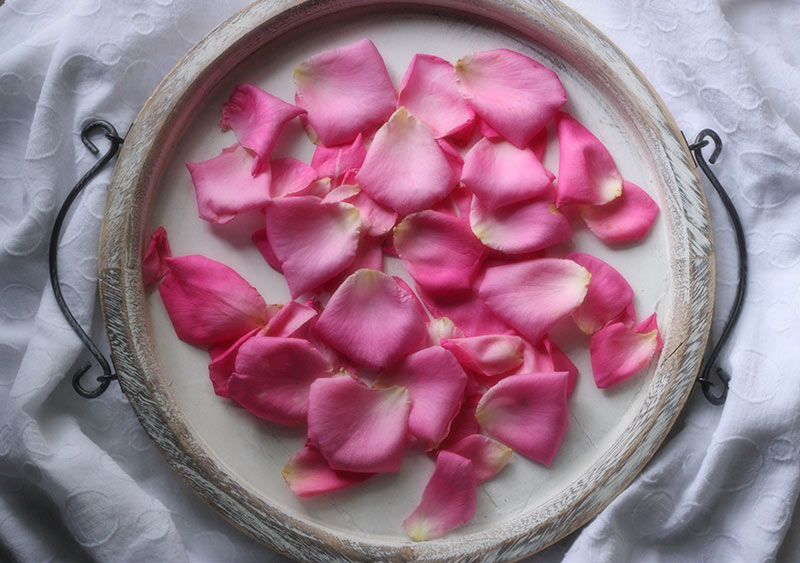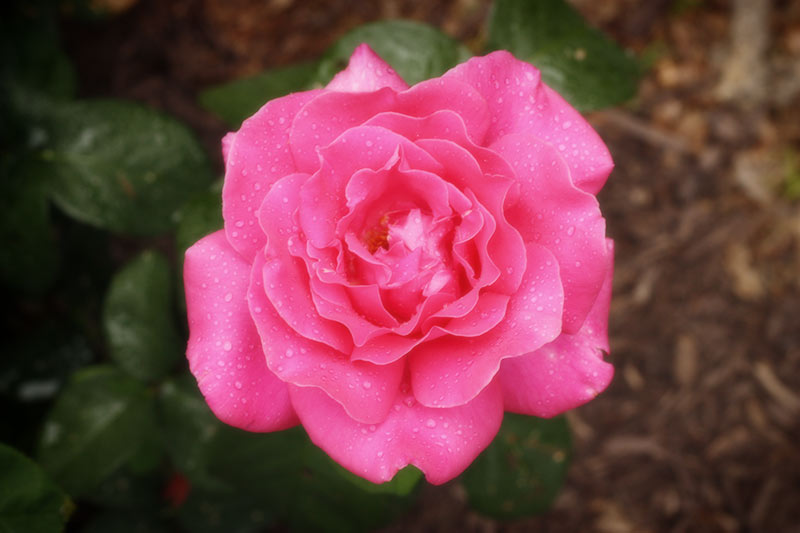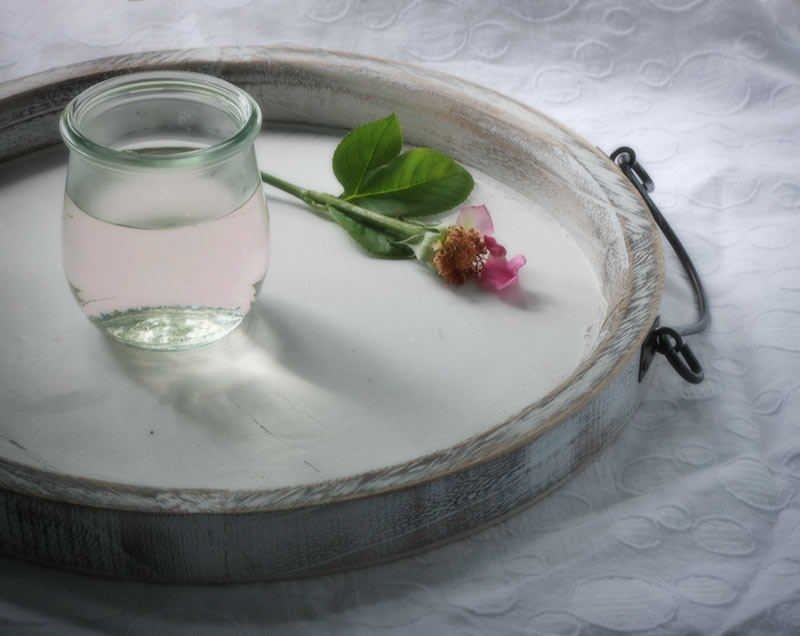DIY rosewater toner

I really have to question my sanity at the decision to grow tea roses again. Many years ago, before the heirloom tomato obsession kicked in, I grew roses. Gorgeous, silky petaled tea roses, the ones with perfect buds that open into full, blushing blooms, heavenly scented
This is a blissful, meditative, soul enriching pastime for many people.
But not for me.
As much patience as I have for my beloved heirloom tomatoes and their various issues, the drama of growing roses eventually broke my spirit (thrips! spider mites! leaf rollers! japanese beetles! japanese beetles! japanese beetles! black spot! powdery mildew! downey mildew! blight!). I haven’t grown roses in 20 years.
But, a strange repetition reared its head over the winter: the want for rose petals. Mostly for the Moroccan recipes that held my fascination, but also for skin care products.
Roses are sold in practically every corner store, of course. But, they’re not organic — none of them. And, as a former rose grower, I can tell you exactly what’s been sprayed on those gorgeous specimens of nature’s perfection:
Nothing you want in or on your body.
The only way to get a hold of organic roses that won’t break the bank, I’ve concluded, is to grow them myself. And so ….

Gosh, they are gorgeous, aren’t they (she says dreamily, before the black spot hits and the Japanese beetles descend). You should see the Celebrity rose with its yellow and pale pink blooms.
For the last month, the bushes have been blooming one stem at a time, and then all of the sudden, this little hot pink beauty sent out four at once.
Time, at last, for rosewater.
I love rosewater’s skin-soothing abilities. (And believe me, my skin needs lots of soothing.) Its anti-bacterial properties provide a layer of protection and healing to your skin, and its abundance of Vitamin C helps repair damage and ward off aging. A few drops of witch hazel (optional) creates a lovely toner that can be used day and night. Swab a rosewater-dampened cotton ball across your skin after cleansing, or fill a spray bottle and spritz your entire face.
Refreshing, especially after a long day in the garden battling black spot and Japanese beetles.

Most rosewater recipes you find on the web call for large amounts of petals, which is both impractical and a waste. Rosewater does not stay fresh for more than a week or two without preservatives (and only if kept in the fridge), so bottling a quart at a time is overkill (unless you’re going to share your efforts with your most beloved peeps, who will love you even more).
Small batch rosewater is the way to go. And in my case, my roses will throw out just enough buds to keep me lavished in rosewater all summer long.
Here’s what you’ll need:
- A small, clean kitchen towel/bar mop
- A large pot with a domed lid* (thoroughly wash the lid, top and bottom)
- A heat-proof bowl that will fit inside the pot with plenty of room around the bowl base.
- The petals from 4 or 5 fully bloomed, heavily scented, organic roses (color does not matter; scent does).
- Purified water
- 2 to 3 trays of ice cubes
- Witch hazel (optional)
*The curve of the lid does not have to be steep, just enough to form a bowl when overturned.
Fold the kitchen towel into a small square and arrange in the center of the pot. Place the bowl on the towel. Spread the rose petals around the bowl, and pour water over petals — not in the bowl — to cover. (The towel will hold the bowl in place and keep it from chattering in the pot while the water is boiling.)
Bring the water to a gentle boil, then reduce the heat to maintain a simmer. Place the lid on the pot upside down, so that the dome is pointing downward in the pot. Add about 1/2 of a tray of ice cubes to the “bowl” of the downturned lid. When that batch of ice melts, wait a few minutes, then add more, repeating this step until you use all of the ice (discard the water from the melted ice, as necessary).
You’ve just created a homemade distiller!
Condensation created inside the pot from the interaction of the simmering roses and the ice will cause drops of purified rose essence to form on the domed portion of the lid, and drip into your bowl. This is your rosewater. Continue the process for 30 to 40 minutes (even if you’ve run out of ice). This will be enough time to create about a pint of rosewater. Gently remove the bowl of rosewater from the pot, and allow to cool.
You’ll notice that the distilled rosewater is clear, and that all of the color from the petals remains behind in the pot. That’s what’s supposed to happen. The scent and flavor of roses — go ahead and taste the rosewater, it’s perfectly edible — is in the distilled water, not in the pot. If you want that beautiful pink blush to your rosewater, add just the tiniest drop of strawberry juice or beet juice.
Add several drops of witch hazel, if you like. Store in an airtight container, preferably in the fridge.
Enjoy!

Comments:
Comments are closed.












I had no idea rose petals were good for your skin. Although not a fan of the taste in my food–and I have tried–I can see the benefit here. Good luck with those beetles.
Hi, Have you ever grown any of the english roses?
Lots of petals, incredible scents, and developed to be resistant to a lot of the common rose grower irritants.
I don’t spray my roses and still get lots of wonderful blooms.
Karen (Surrey, B.C. Canada)